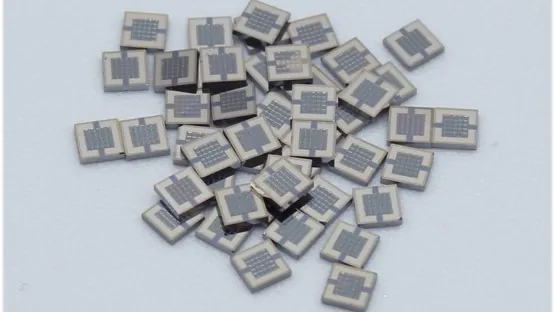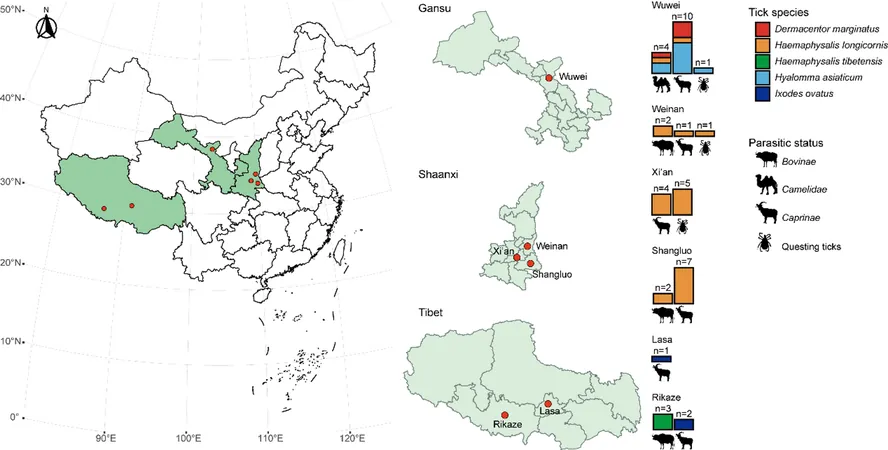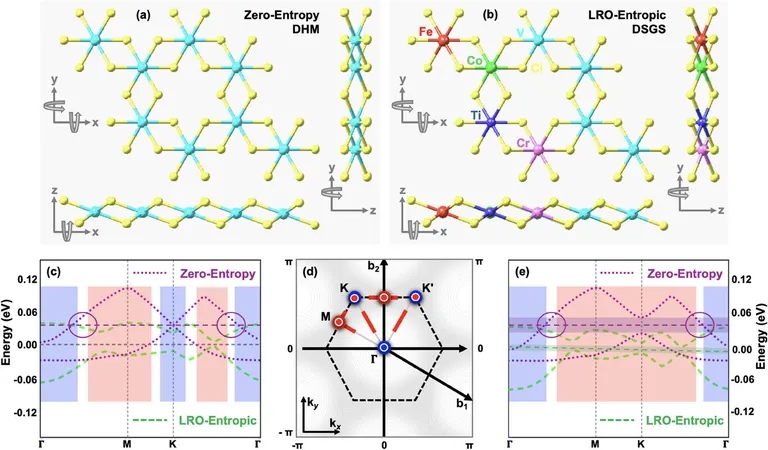
Revolutionary Light-Activated Microdevice Set to Transform Green Electrochemistry
2025-01-09
Author: Li
In an exciting breakthrough, a collaborative team of chemists and nanofabrication experts from Cornell University has unveiled a groundbreaking 2 millimeter-wide, wireless, light-activated device designed to revolutionize the field of electrochemistry. This innovative device, named SPECS (Small Photoelectronics for ElectroChemical Synthesis), functions like a miniature solar panel, enabling researchers to efficiently spark electrochemical reactions using light, making it suitable for industrial applications.
Professor Paul McEuen, an esteemed figure in the field and John A. Newman Professor of Physical Science Emeritus, expressed his enthusiasm for this advancement, stating, "I’m excited about bringing electronics into the small world. This device is a significant step toward using light to communicate with chemical systems." The unique design allows SPECS to fit snugly into a standard 20 microliter well of a typical high-throughput experimental plate.
The development of this innovative device is detailed in a recent publication in the prestigious journal *Nature* on January 9, where McEuen and organic chemist Song Lin, Tisch University Professor of chemistry and chemical biology, served as corresponding authors. Bartosz Górski, Jonas Rein, and other graduate students contributed significantly to this research.
Electrochemistry has long held promise as an efficient and eco-friendly method for synthesizing new molecules. However, traditional methods have often faced limitations due to bulky equipment, including electrodes and power supplies, rendering them impractical for widespread use—especially in industries like pharmaceuticals. As Lin highlighted, "Chemists fundamentally desire to control their reactions," and SPECS offers a streamlined solution without the toxic waste often associated with conventional chemical processes.
SPECS packs a powerful punch by combining 25 tiny silicon photodiodes into a compact 2mm square, producing sufficient voltage to drive chemical reactions. Operating under light conditions akin to that of a sunny day, these photodiodes generate a current that energizes solutions, allowing for direct electron transfer which is essential for driving chemical transformations.
"This method allows medicinal chemists to tap into new molecules for addressing critical health issues such as HIV, diabetes, and cancer," Lin stated. By eliminating the need for chemical oxidants and reductants—often wasteful and hazardous—SPECS paves the way for cleaner and more efficient synthetic pathways.
McEuen emphasized the environmental benefits of this innovative approach, noting, "We are making electrochemistry easier to use and scalable. This will integrate seamlessly into the daily workflows of chemists, not just those specialized in electrochemistry."
The team plans to conduct pilot studies with pharmaceutical companies and academic institutions in the upcoming months while simultaneously enhancing the capabilities of SPECS. Bravo Tech, a startup emerging from Cornell, will oversee its commercialization.
Lin is already witnessing the benefits of SPECS in his lab, stating, "It’s rapidly becoming an essential part of my research. We are accelerating the development of electrochemical reactions and monitoring them in unprecedented ways."
The success of SPECS can be attributed to an interdisciplinary collaboration at Cornell, with physicists initially designing the microfabrication for the device, while members of Lin's lab executed most of the fabrication at the Cornell NanoScale Science and Technology Facility (CNF).
Funded by a New Frontier Grant from the College of Arts and Sciences, the National Institutes of Health, and additional institutional support, SPECS promises to lead the charge toward more sustainable practices in chemistry and beyond.
Stay tuned as this innovative technology could herald a new era in both academic research and industrial applications, propelling green chemistry to new heights!




 Brasil (PT)
Brasil (PT)
 Canada (EN)
Canada (EN)
 Chile (ES)
Chile (ES)
 Česko (CS)
Česko (CS)
 대한민국 (KO)
대한민국 (KO)
 España (ES)
España (ES)
 France (FR)
France (FR)
 Hong Kong (EN)
Hong Kong (EN)
 Italia (IT)
Italia (IT)
 日本 (JA)
日本 (JA)
 Magyarország (HU)
Magyarország (HU)
 Norge (NO)
Norge (NO)
 Polska (PL)
Polska (PL)
 Schweiz (DE)
Schweiz (DE)
 Singapore (EN)
Singapore (EN)
 Sverige (SV)
Sverige (SV)
 Suomi (FI)
Suomi (FI)
 Türkiye (TR)
Türkiye (TR)
 الإمارات العربية المتحدة (AR)
الإمارات العربية المتحدة (AR)